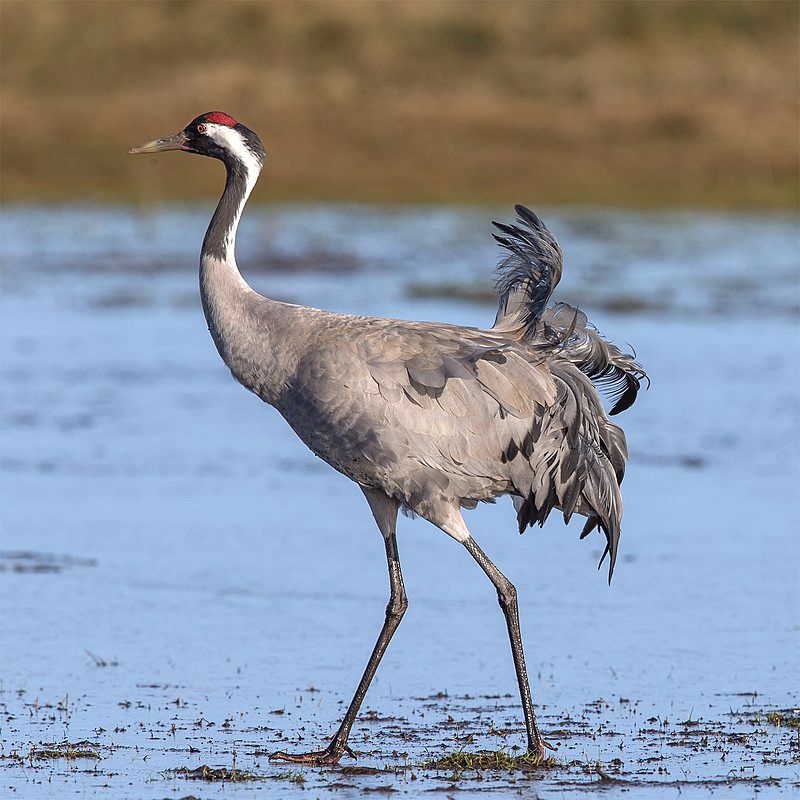Nature lovers can but imagine the Ireland of old. It was packed with wild creatures as varied as any place on earth. And that isn’t just us looking back with rose-tinted glasses. What records we have tell of a land teeming with wildlife.
Dúlra remembers at college studying an old Irish text where Fionn Mac Cumhaill led his band on a three-day hunt. The story recounted their haul – it was astounding, ranging from wolves to wild boar to every variety of bird, the vast numbers of each one listed individually. “This story is a legend,” said the lecturer – an authority on early Ireland – “so the events and characters aren’t real. But what was caught in the hunt – that is accurate.”
One of those birds snared by Fionn Mac Cumhaill was almost certainly a crane. It’s simply a remarkable bird which stands shoulder-high to a person, while its tumpeting call echoes over the land. Its demise here came 300 years ago, at a time when not just animals and birds were scrubbed from the land, but people too.
This giant bird dwarfs the heron – which, luckily, nests in trees. The crane lays its two eggs on the ground in a dry spot in a remote bog, which gives it its Irish name corr mónadh. If anyone wanted to harm it, it was literally there for the taking.
And its largely vegetable diet of shoots and fruits of bog plants meant it was a favourite at the dinner tables of the rich – the flesh of grain-eating birds are most palatable to people.

But not at the tables of the Gael. Here it was more likely to be caught and kept as a pet. It was given cult status – Brehon Laws demanded an exorbitant fine for killing a pet crane. There was a revulsion about eating one – like there is to a pet dog today.
Our placenames are riddled with references to cranes – at least 300 of them. The most famous is the Curragh in Co Kildare which means ‘crane meadow’. It’s depicted in many Irish books, including the Book of Kells, and there are countless crane brooches and pins in our museums. A 13th century floor uncovered in County Louth was covered in crane paintings – like lino today.
Vast migratory route
Cranes breed happily from Russia to Denmark, spending winter in Spain and North Africa. And it’s that vast migratory route that sends the odd stray back to the land where it was once so at home.
And so it transpired that a pair arrived this year and settled in a former Bord na Móna bog in the midlands. They built a nest and laid their two eggs. The chicks hatched successfully but sadly both disappeared shortly afterwards – it’s thought they could have been picked up by a fox.
Nonetheless, environmentalists are delighted: “It shows that we are creating the right conditions in our rewetted peatlands for these magnificent creatures to thrive,” said ecologist Mark McCorry.
With Bord na Móna having already rehabilitated 20,000 hectares of bog and another 33,000 still to be rewetted, there’s every chance this most magnificent of Irish birds could be soon back living among us. That glorious country enjoyed by Fionn Mac Cumhaill may bloom once again.
• If you’ve seen or photographed anything interesting, you can text Dúlra on 07801 414804.
Nota Bene: It seems I may have got it wrong about the ‘rewilded’ Glen Road roundabout. Resident Fiona texted to reveal how those overgrown plants that Dúlra so admired hide a mess of discarded items that have been dumped there. Residents don’t mind genuine rewilding, but it seems this roundabout has just been totally neglected, much to the annoyance of people who live around it.
Looks can be deceiving! Rewilding isn’t just an absence of care, but it’s a managed process of giving land back to nature.






